Discover how a bimodal integration strategy can address the major data management challenges facing your organization today.
Get the Report →Feed Xero Data into FineReport
How to set Xero data as a JDBC data source in FineReport.
The CData JDBC Driver for Xero fully implements the JDBC standard and can provide Xero data connectivity to a wide variety of BI, reporting, and ETL tools and custom applications. In this article, we explain how to set Xero data as JDBC data source in FineReport and view Xero data as a table in the Report Designer.
About Xero Data Integration
Accessing and integrating live data from Xero has never been easier with CData. Customers rely on CData connectivity to:
- Connect to Xero Accounts and both US and Australian Payroll APIs.
- Read, write, update, and delete ServiceNow objects like Customers, Transactions, Invoices, Sales Receipts and more.
- Use SQL stored procedures for actions like adding items to a cart, submitting orders, and downloading attachments.
- Work with accounting, payroll, file, fixed asset, and project data.
Customers regularly integrate their Xero data with preferred tools, like Tableau, Qlik Sense, or Excel, and integrate Xero data into their database or data warehouse.
Getting Started
Set Up a JDBC Data Source of Xero Data
Follow the instruction below to set Xero data as a FineReport database connection.
- Copy the cdata.jdbc.xero.jar file from the lib folder in the CData JDBC Driver for Xero installation directory to the lib folder of the FineReport installation directory. You will need to copy the cdata.jdbc.xero.lic file as well.
- From the Server tab, select Define Data Connection, click to add a new connection, and click JDBC.
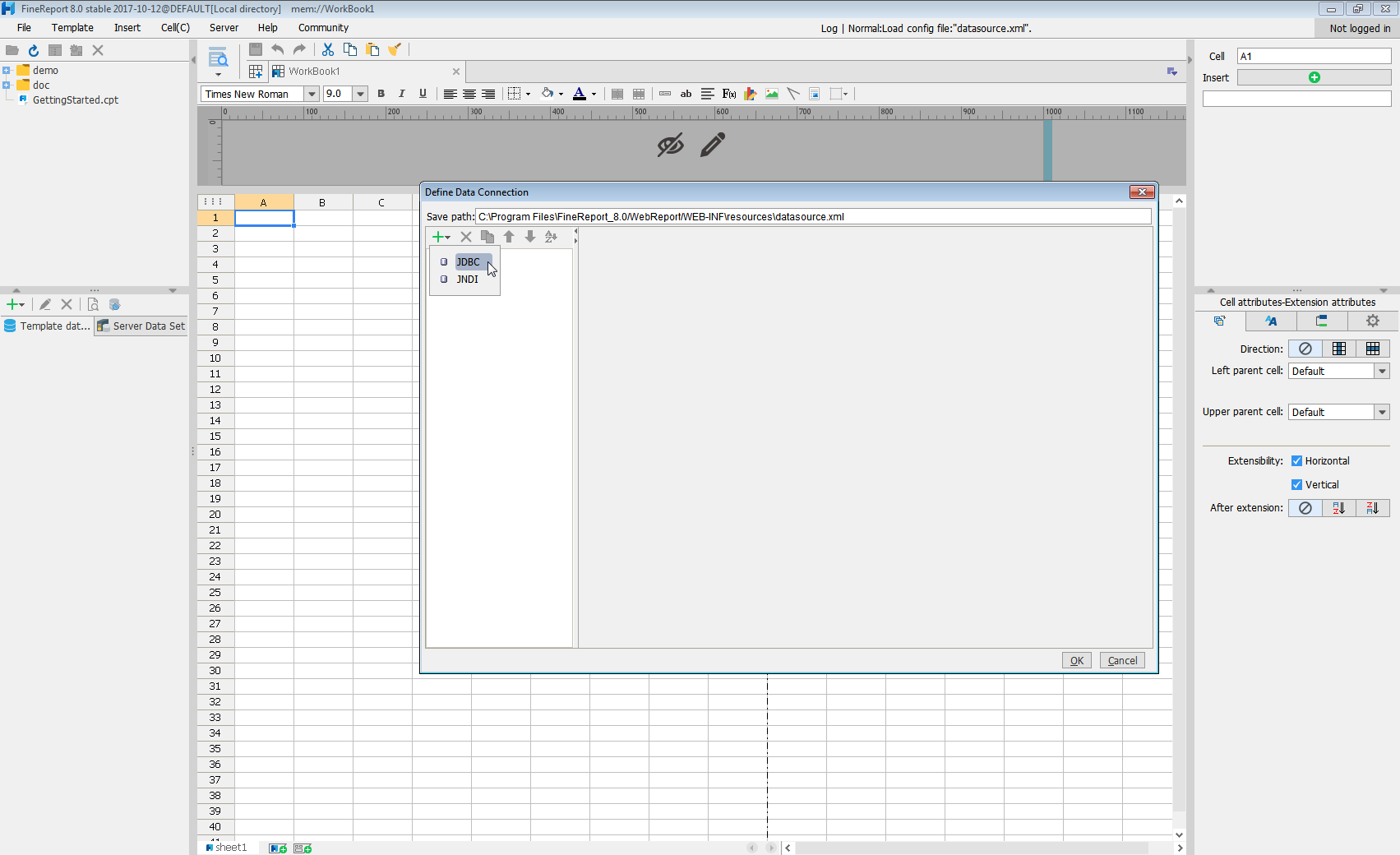
Next we will set up the data connection definition in the window.
- Database: Others
- JDBC Driver: cdata.jdbc.xero.XeroDriver
-
URL: A standard JDBC connection string using semicolon-separated connection properties.
To connect, set the Schema connection property in addition to any authentication values. Xero offers authentication for private applications, public applications, and partner applications. You will need to set the XeroAppAuthentication property to PUBLIC, PRIVATE, or PARTNER, depending on the type of application configured. To connect from a private application, you will additionally need to set the OAuthAccessToken, OAuthClientId, OAuthClientSecret, CertificateStoreType, CertificateStore, and CertificateStorePassword.
To connect from a public or partner application, you can use the embedded OAuthClientId, OAuthClientSecret, and CallbackURL, or you can register an app to obtain your own OAuth values.
See the "Getting Started" chapter of the help documentation for a guide to authenticating to Xero.
Built-in Connection String Designer
For assistance in constructing the JDBC URL, use the connection string designer built into the Xero JDBC Driver. Either double-click the JAR file or execute the jar file from the command-line.
java -jar cdata.jdbc.xero.jarFill in the connection properties and copy the connection string to the clipboard.
![Using the built-in connection string designer to generate a JDBC URL (Salesforce is shown.)]()
When you configure the JDBC URL, you may also want to set the Max Rows connection property. This will limit the number of rows returned, which is especially helpful for improving performance when designing reports and visualizations.
A typical JDBC URL is below:
jdbc:xero: - Click Connection pool attributes and set Test before getting connections to No.
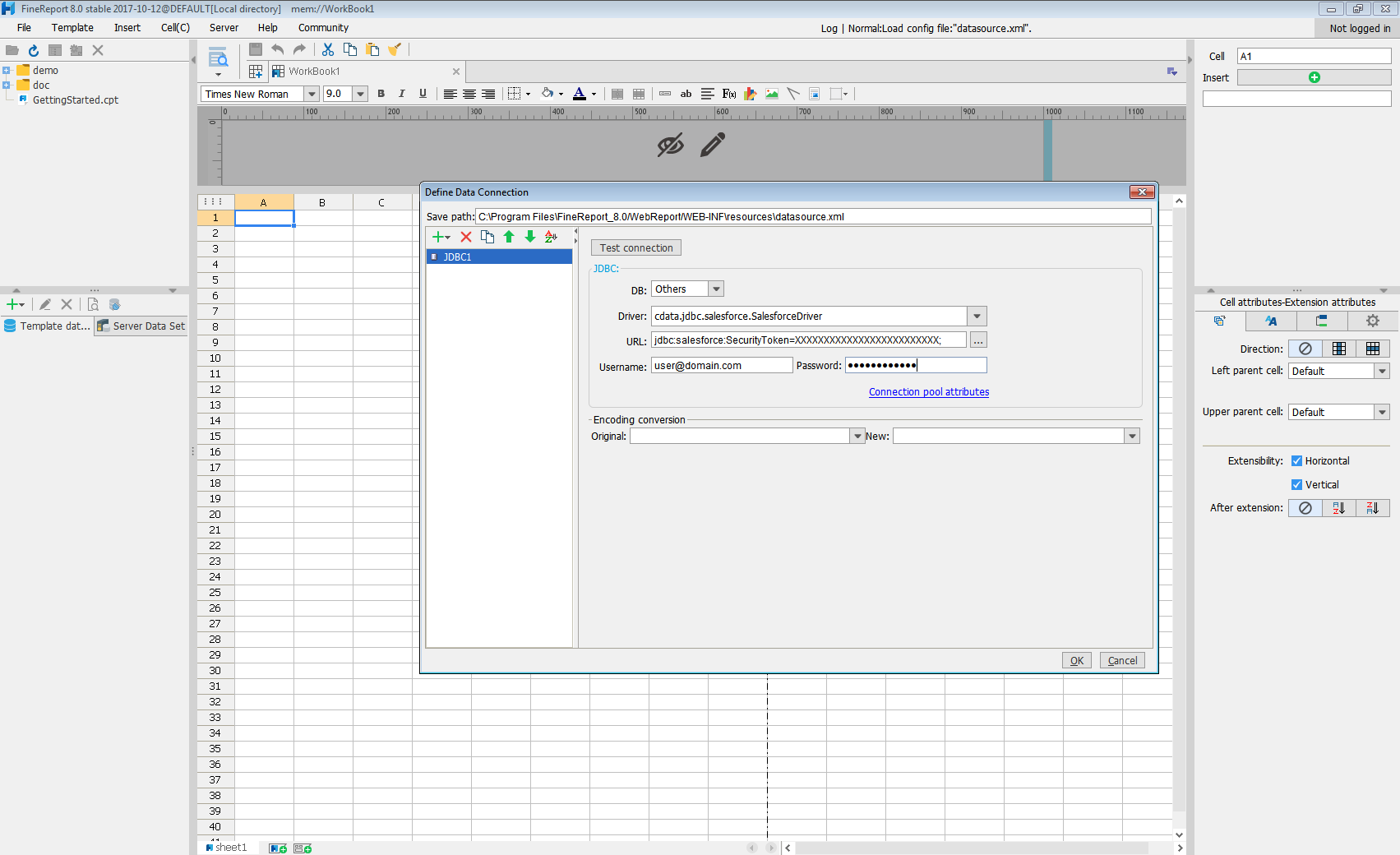
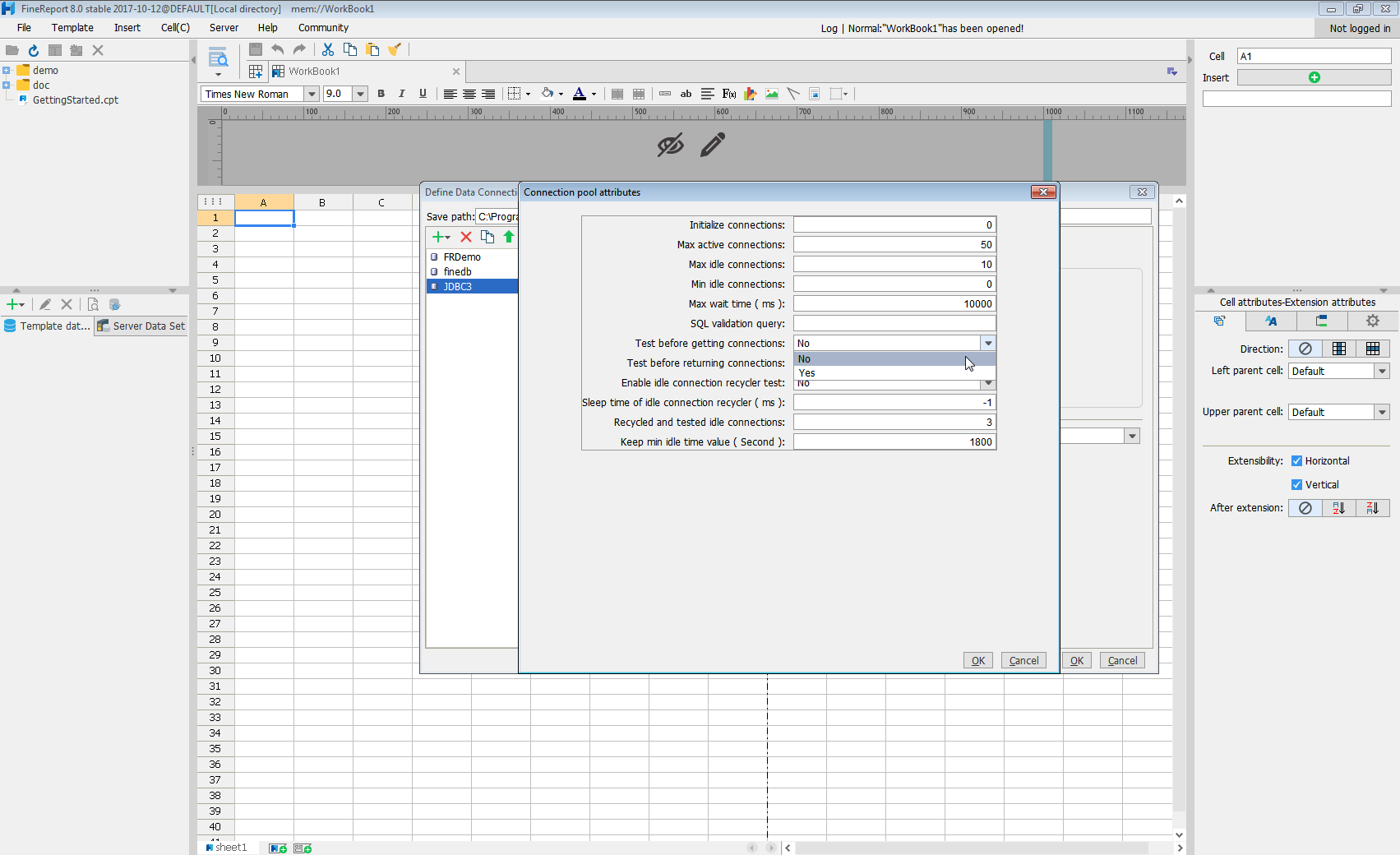
Click Test connection to ensure you have configured the connection properly. With the connection to Xero set up, you can use it as FineReport data source.
Select Xero Data in the Report Designer.
- Click to add a new template data set and select DB query to open the database query window.
- Choose the JDBC connection that you created from the dropdown list.
- The Xero entities will appear as tables on the left pane.
- Write a SELECT statement for the Xero data tables and columns that you want to load.
- Click preview and data is shown as table.
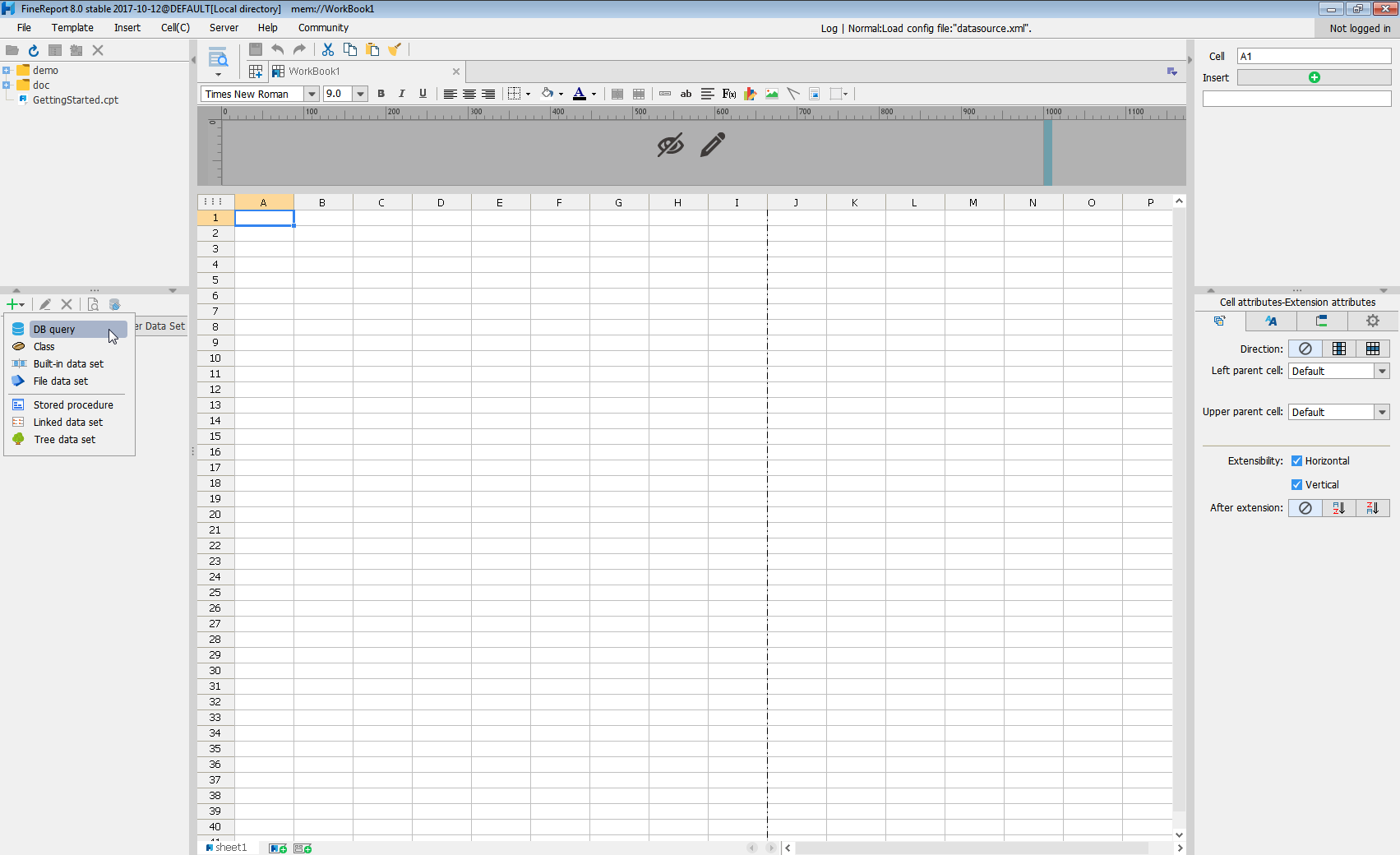
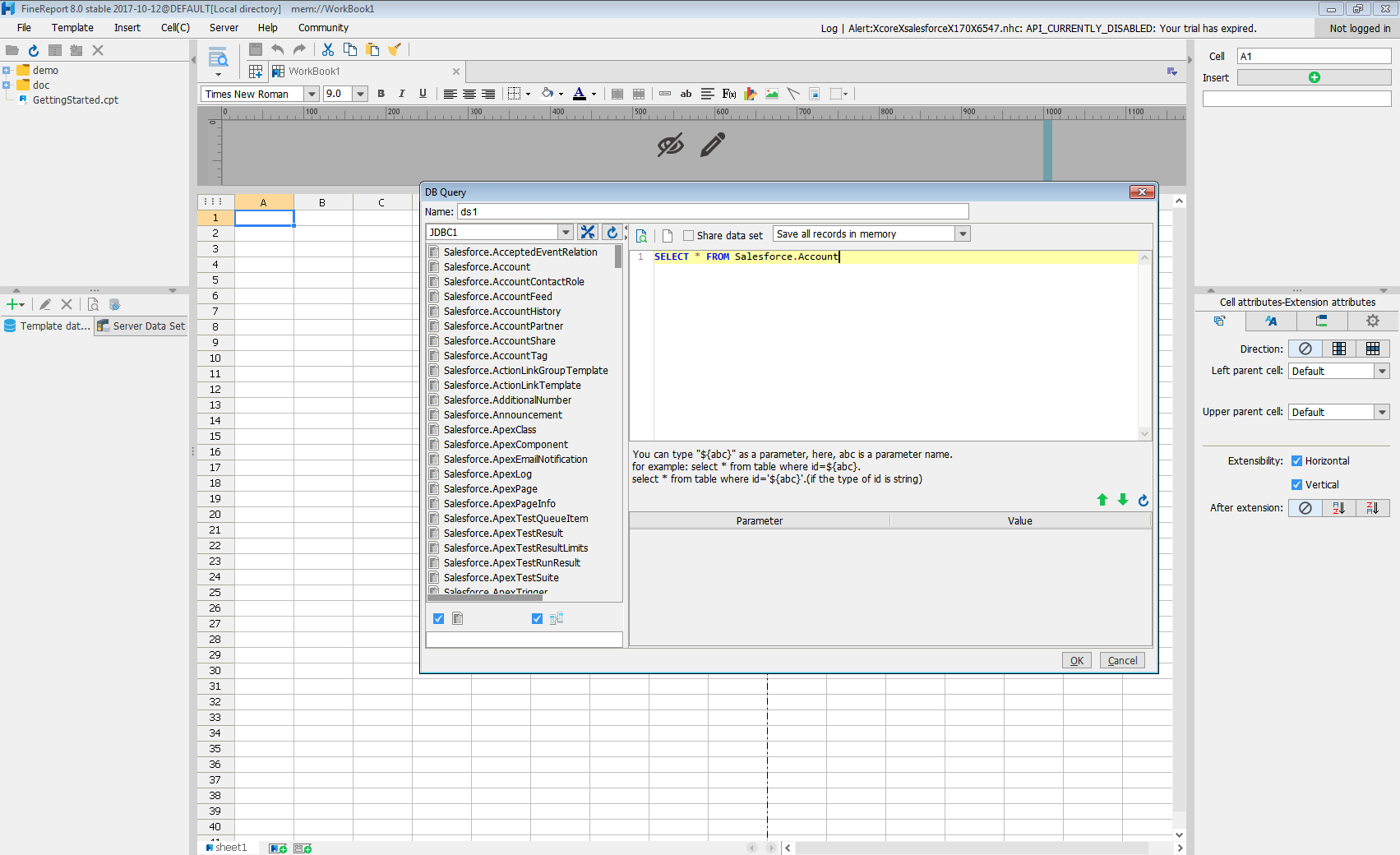
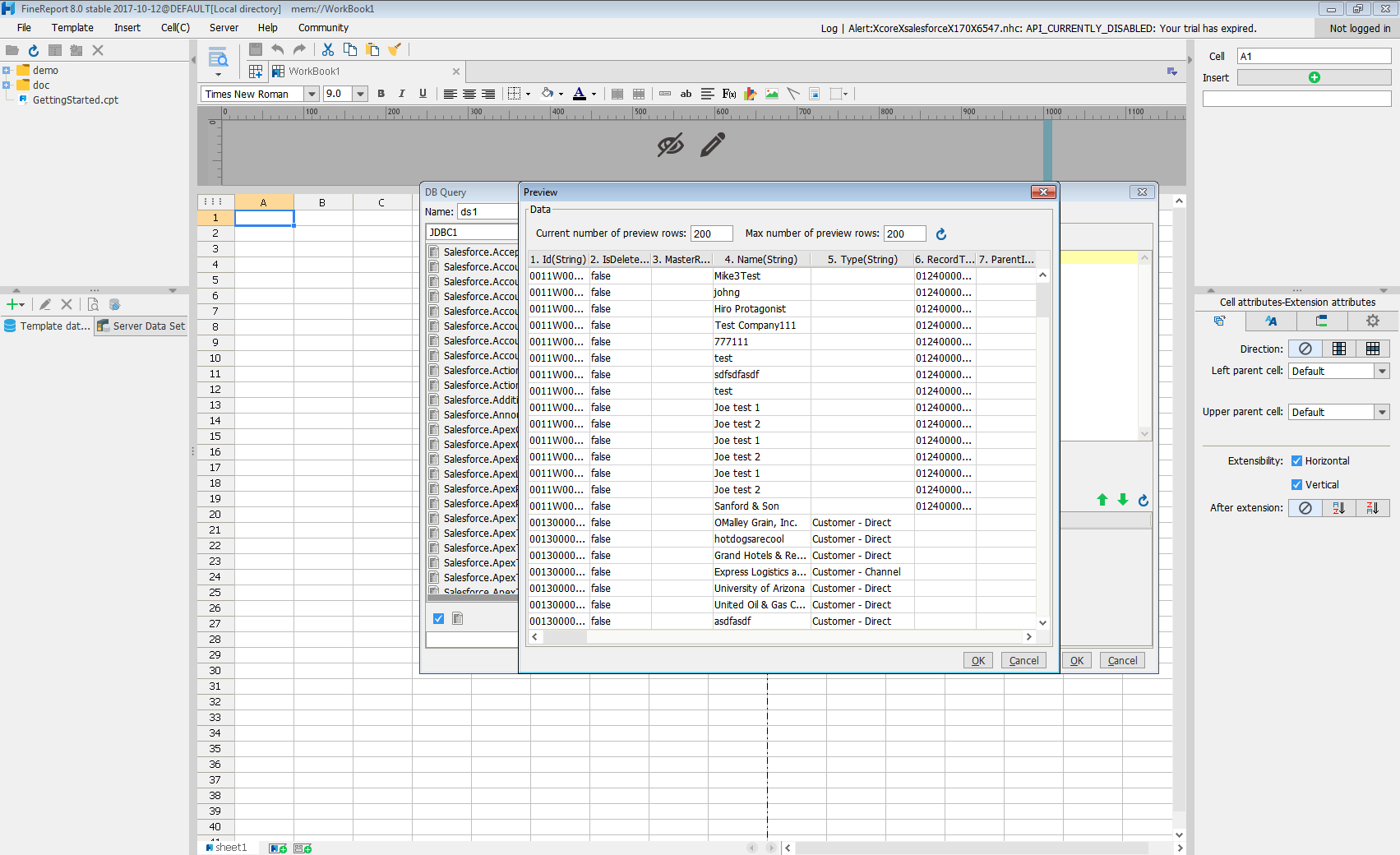
With these simple steps, Xero can be used as a JDBC data source in FineReport.






